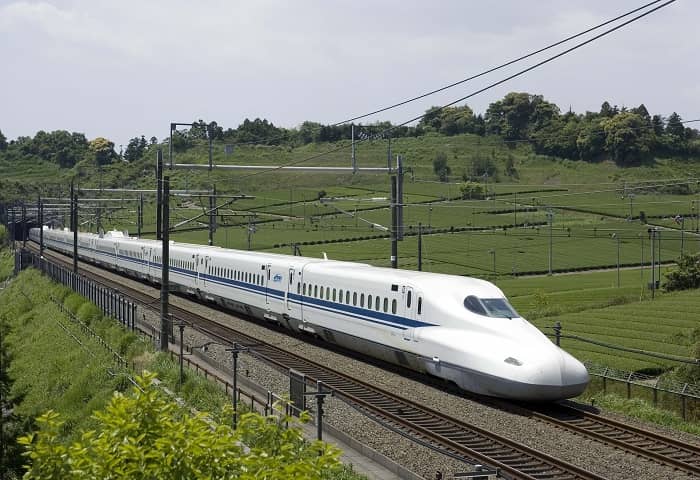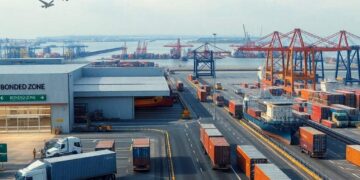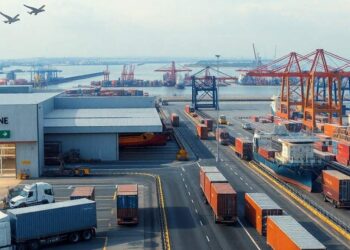Airports may benefit from high-performance, dependable, secure connection provided by private 5G, which is revolutionizing many sectors and improving smooth and effective ground operations. Airside activities have historically depended on a restricted amount of wireless connection, mostly via radio communications at the gates. This emphasizes how important it is to move important applications from antiquated legacy systems to a single cellular platform.
Nonetheless, there is a compelling argument for cellular connectivity inside the terminal, since Wi-Fi and cable Internet connections have been widely used at airports. In addition to meeting present connection needs, private 5G may revolutionize terminal operations and prepare them for the future by allowing cutting-edge technologies like artificial intelligence (AI) and augmented reality (AR).
We’ve compiled a list of five essential use cases that will significantly benefit airport operators by using private 5G and improving passenger experiences both inside and outside of terminals.
1. Integrated retail innovation at airports with commercial operations
In addition to being vital passenger comforts, retail and food and beverage outlets provide substantial income streams for airport owners. For smooth transactions, all of these business functions significantly depend on linked Point-of-Sale (POS) systems.
These Point-of-Sale (POS) capabilities are now the main use case for connectivity in airport retail operations. Traditional Wi-Fi networks are faster, but 5G networks are superior because they can accommodate many mobile portable scanners at once and give dependable, secure communication. This facilitates safe credit card transactions, quick inventory updates, and effective, multilingual customer support via mobile applications for retail establishments.
The ability to support new retail formats like 24-hour cashier-less shops (like Travelwell, an autonomous convenience store at Hong Kong International Airport) and provide chances to use cutting-edge technologies are what make 5G technology so revolutionary for the retail industry at airports. While some retailers are interested in trying virtual reality (VR) and augmented reality (AR) to provide better consumer experiences, others currently use AI and computer vision technologies to track the movements of their products and customers.
2. Security and monitoring using cameras
For a long time, camera surveillance has been a dependable way to keep an eye on events inside terminals. However, because fiber cables are used to link most modern cameras, their installation is restricted to spaces with ethernet wiring. 5G-capable cameras, on the other hand, can be mounted anywhere. Because of construction or other causes that necessitate the swift deployment or relocation of cameras, airports often grow, alter their layouts, or encounter fluctuating security demands. 5G private networks make it easier to adjust to these changing needs.
Private 5G networks provide scalability in addition to mobility, which makes it possible to install a big number of moveable surveillance cameras, such bodycams for security guards or automatically guided vehicles. These cameras are very useful for incident response and rapid inspections since they can follow moving people or items.
Private 5G networks that support edge computing also enable AI analytics engines to examine and analyze video feeds almost instantly at the network edge, doing away with the need to send data to a central location. This feature opens the door to the use of high-bandwidth and ultra-low latency advanced vision technologies including real-time object tracking and face recognition.
3. Optimizing IoT gateway backhaul connection
Modern airport technologies rely significantly on real-time data gathered from these devices, such as automation and face recognition for contactless check-ins. To create dependable models for AI applications, such as digital twin modeling, smart temperature and air quality controls, and more, airport operators want as much data as possible. To facilitate this expansion, a private 5G network makes sure airports have dependable, excellent coverage everywhere.
IoT ecosystems are currently only partly wireless, with signals being processed and routed back to a wired hub or gateway. Increased flexibility may be accessed via private 5G connection, enabling airports to modify their equipment to fit changing conditions and plan for future growth. Furthermore, private 5G networks provide improved privacy and security thanks to strong encryption techniques that protect sensitive information.
As airport technology advances, 5G networks must also be able to manage the high connection density seen at airports without sacrificing performance. Another justification for using a private 5G solution’s dedicated network resources is that airports may divert IoT traffic, freeing up Wi-Fi for visitor usage.
Moreover, asset tracking—a critical procedure for effective airport operations—is made possible by IoT. The different solutions that make up today’s asset tracking systems aren’t always effective everywhere. For example, GPS signals may function properly outside but not inside terminals. The integration of several linked devices is made possible by private 5G networks, providing a dependable and safe method of tracking assets throughout the airport.
A private 5G network may gather historical data on asset utilization in addition to real-time tracking. Afterwards, with the use of this data, choices on asset replacement and allocation can be made with knowledge, patterns may be found, and asset usage optimized.
4. More intelligent management of luggage
Anybody who has ever traveled knows how frustrating a convoluted and unreliable system can be, as well as how crucial a flawless baggage handling experience is. Over time, reliance on barcode technology has led to a considerable number of bags that have been handled incorrectly. Tracking the whole journey—from curb to plane—is made simpler with private 5G.
Radio waves are used by Radio Frequency Identification (RFID) technology to identify individuals or items. Recent technological developments are predicted to result in a 25% decrease in luggage mishandling rates, which will save airlines a significant amount of money and, more significantly, improve customer satisfaction. RFID is already being used by a number of airports, including Gardermoen in Oslo, Schiphol in Amsterdam, and Newark International Airport, to monitor luggage throughout the sorting, loading into aircraft, and delivery processes. The inherent security, flexibility, and dependability of private 5G may greatly assist the adoption of RFID systems.
Fully automated luggage loading will be possible in the future thanks to technologies like autonomous Unit Load Devices (ULDs), but they will need private 5G networks’ low latency and larger data capacity.
Whatever the tracking method, private 5G networks streamline the procedure and lessen frequent problems. Airports may gather performance data by installing 5G-enabled sensors and scanners on their equipment. This will enable them to identify potential issues before they become serious disruptions.
5. Vital communications for day-to-day activities
The days of legacy communication technologies are drawing to an end. Futureproofing is crucial as airports switch to new technologies for vital communications. Push-to-X (PTX), a crucial component of private 5G technology, enables instantaneous data, audio, or video transmission among many receivers, including airport personnel, security personnel, and emergency responders.
This device has the potential to completely transform communication and operational effectiveness at airport terminals—places where prompt, coordinated reactions are crucial, such as during medical or security crises.
The vast range of applications inside terminals, from real-time luggage monitoring to security surveillance, may be supported by private 5G networks thanks to their fast data transfer rates, low latency, enhanced security, high reliability, and support for a very large number of endpoints. A future where airports can operate with greater efficiency and connection for a simplified travel experience, from start to end, is promised by 5G networks, which provide unified connectivity that works across apps and with current connectivity like Wi-Fi.



























